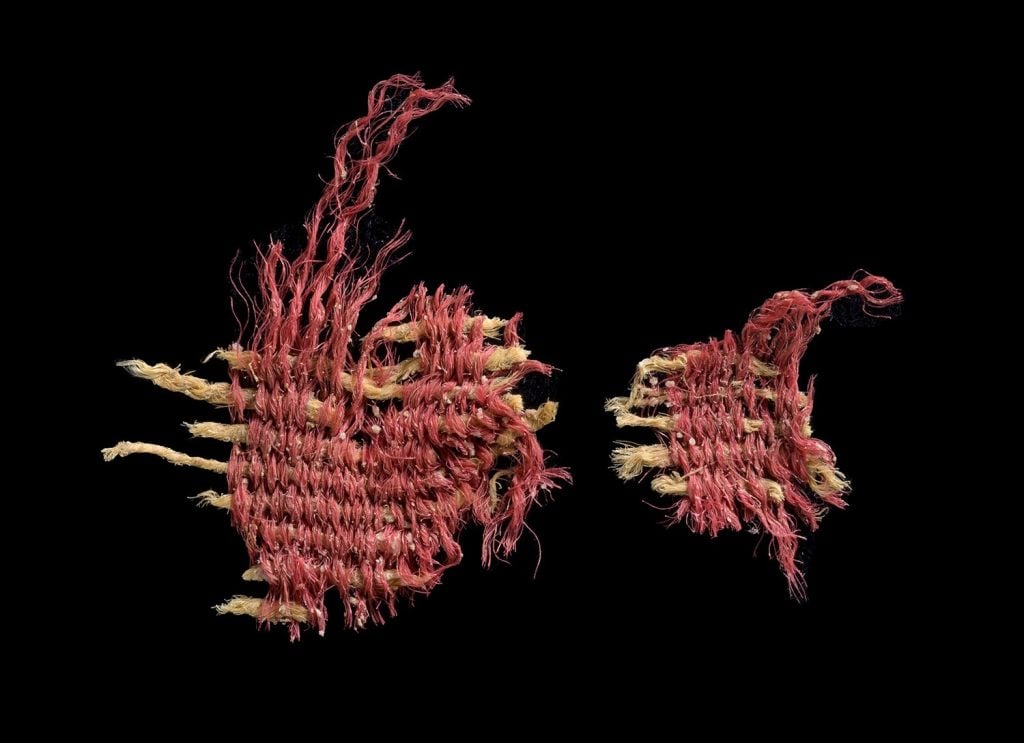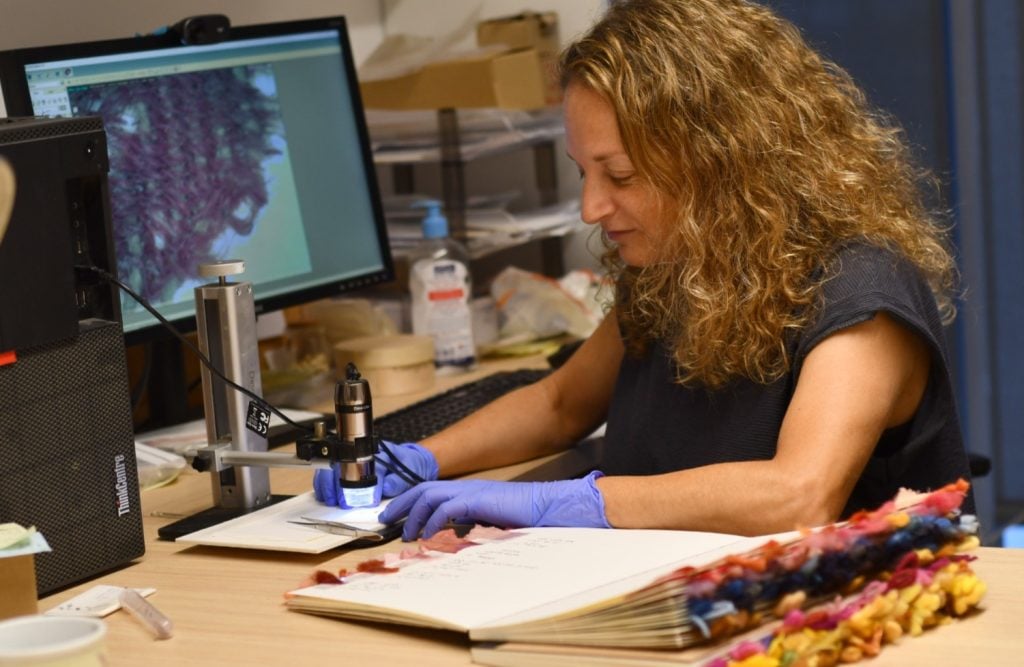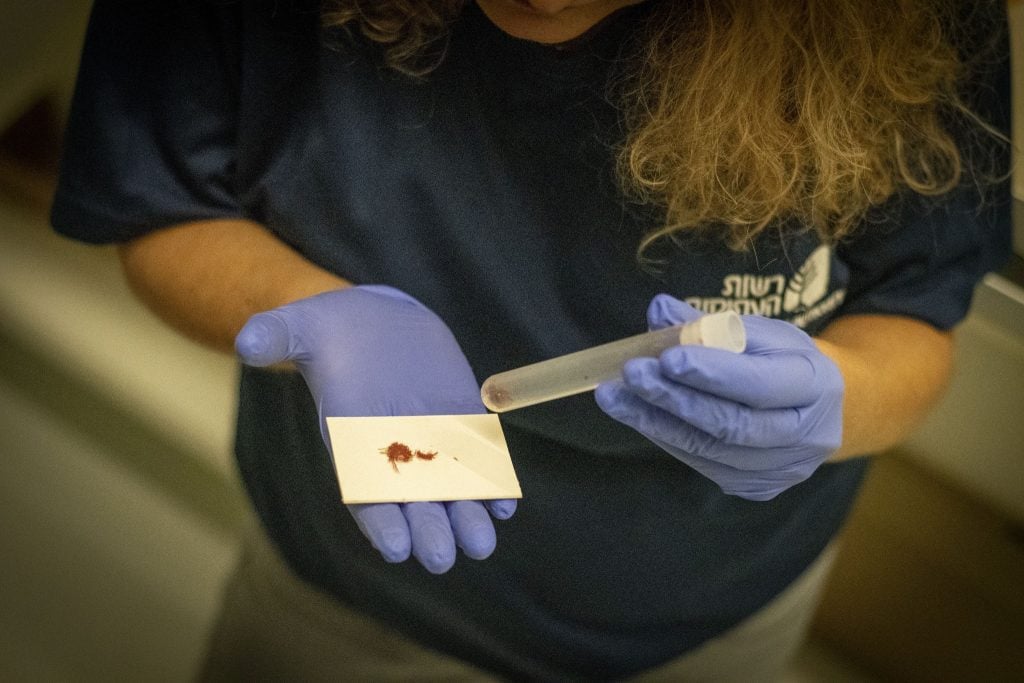Archaeology & History
Oldest Example of Ancient Red Dye Found on Tiny Textile
The hue was created by capturing and crushing scale insects.

Until the Spanish discovered cochineals in the New World, harvesting and crushing parasitic scale insects that live on oak trees was the predominate means of producing high quality red dye. Early Egyptians used the dye and the term “scarlet worm” appears 25 times in the Bible, often referring to prized items, such as the covering of the Tabernacle.
Today, the dye is known as kermes, derived from a Sanskrit word meaning “worm made,” and researchers working in Israel claim to have found the earliest evidence of a woolen textile treated with the dye.
Measuring less than 0.7 inches in size, the textile is a weave of colored woolen thread and uncolored linen ones. It was discovered by the Israel Antiquities Authority and Hebrew University in 2016 as part of emergency excavations to preempt theft in the Cave of Skulls, named for the seven skulls found inside it in 1953.

Naama Sukenik from the Israel Antiquities Authority testing the textile. Photo: courtesy Israel Antiquities Authority.
The textile has been dated to the Middle Bronze Age, 1767 B.C.E. to 1954 B.C.E., through carbon dating. The dye itself was identified using High-Performance Liquid Chromatography, a technique commonly used in biology and chemistry labs capable of pinpointing substances in minute quantities. The findings were published in the Journal of Archaeological Science.
“Our analysis enables [us] to pinpoint the precise source of the red color in archaeological textiles down to the species level,” the authors wrote. “It can be determined with a high degree of certainty that the dye used was Kermes vermilio.”
One reason for the dye’s prestige and value was the difficulty in acquiring it. The kermesic acid that provides the bold red color is only produced by female insects during a period of a month after the eggs have been laid but before they have hatched. Furthermore, the insect’s size (three to eight mm) and uncanny camouflage makes them hard to spot.

The kermes textile in the lab. Photo: courtesy Israel Antiquities Authority.
The discovery not only evidences ancient knowledge of using tiny insects to dye wool fibers, but also the possibility of complex trade networks. While there is a type of scale insect native to the region—one that lives on Palestinian oaks and produces a red-orange color—the kermes vermillo lives on a type of oak tree native to the central and eastern Mediterranean.
“The important find bridges the gap between written sources and the archaeological discoveries,” said Naama Sukenik from the Israel Antiquities Authority. “The rare textile is a testament to broad international commercial networks functioning already at this time and indicates the presence of an elite society.”
The disintegration of textiles over time means few examples predating the Roman period have so far been discovered. Still, the practice is known to date back thousands of years with the dye referenced in 5,000-year-old cuneiform tablets and found in jars discovered in a Neolithic-era cave.





